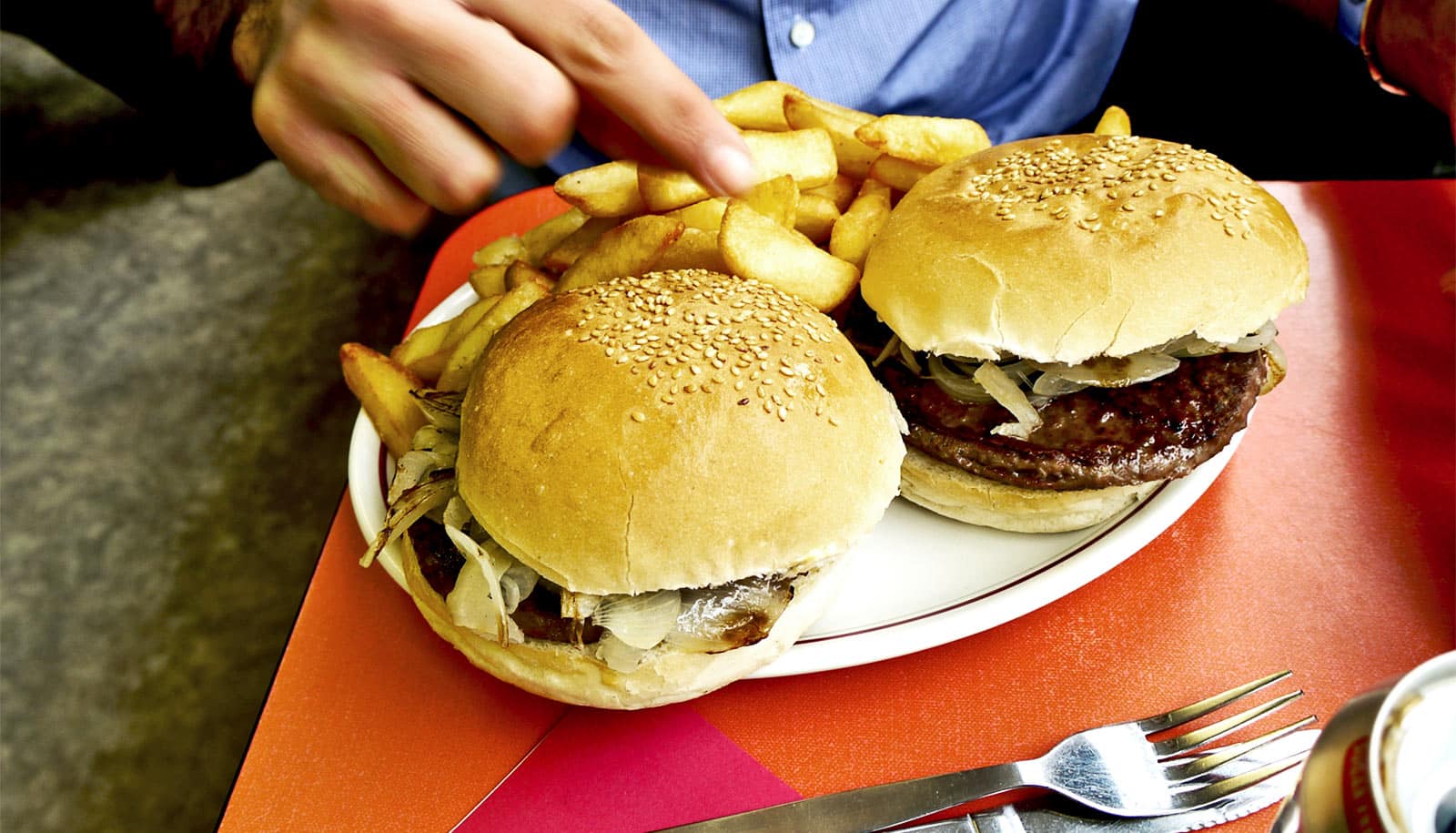Food and drinks depicted in the 250 top-grossing American movies of recent decades largely fail US government nutrition recommendations and UK youth advertising standards, a new study shows.
“If our favorite actors and superheroes aren’t eating salads, why should we?”
Researchers looked at the top grossing movies between 1994 and 2018—including Black Panther, Avatar, and Titanic—to quantify the foods and beverages shown on-screen and see how well they align with what the government recommends people eat and what Americans are actually eating.
“Movies portray the types of foods and beverages that are normative, valued, and reflective of our culture, so the foods and beverages that the film industry decides to depict matter,” says lead author Bradley Turnwald, a postdoctoral researcher at Stanford University. “Audiences look up to famous celebrities, superheroes, and role models, and we’re watching what they’re eating and drinking on screen.”
The study in JAMA Internal Medicine shows on-screen diets fail federal recommendations for saturated fat, fiber, and sodium, and depict frequent instances of high sugar content and alcoholic beverages.
Snacks and sweets, including baked goods, candies, and processed salty snacks, showed up on screen most frequently. About 40% of beverages in these movies were alcoholic. Even among the G-rated movies—the Motion Picture Association of America’s (MPAA) lowest classification for general audiences with no age restrictions—20% of beverages were alcoholic. A majority of the 250 films analyzed—88%—were accessible to youth with MPAA ratings of G, PG, or PG-13.
“The movie-depicted diet largely failed across the board for US government recommended daily intake levels—and it was similar in a lot of ways to what Americans actually eat, which we know to be a mostly unhealthy diet,” says Turnwald. “Movies show unhealthy foods as being stereotypical, which Americans then see, which reinforces what is normative. You get this cycle that just spins round and round.”
Movie superheroes don’t eat salad
To determine just how unhealthy the on-screen foods actually are, the researchers looked to other countries like the United Kingdom that are beginning to restrict the types of food and beverages advertised to youth.
Advertising unhealthy foods and beverages is restricted in the UK if 25% or more of an audience includes youth under age 16. Researchers applied the UK rating system to the set of American movies and found that over 70% of movies received food ratings that would be illegal to advertise to youth under the UK standard. For beverages, over 90% of movies received ratings that would fail UK advertising standards.
“What we commonly eat and drink and seem to enjoy shapes what movie production studios decide to depict. At the same time movies shape our preferences, our behaviors, and our imaginations,” says senior author Hazel Rose Markus, a psychology professor.
“Restricting which foods and beverages are depicted in cultural media, and thus regulating artistic expression, would be an unpopular and un-American solution. Yet given the demonstrated recent culture-shifting power of movies in so many domains—think gender, race, sexual orientation—there is reason for optimism that movies could come to play a major role portraying that Americans eat more than just cake, candy, and chips, and in the process, promote healthier food and beverage consumption.”
While this study didn’t measure how viewers actually respond to seeing these foods on-screen, the researchers note that prior research has found that when people are exposed to violence, racial bias, binge-drinking, and smoking in movies, it can actually increase their engagement in these problematic behaviors.
“We have poured countless resources into educating people about the importance of eating well and providing more access to healthy foods. But these methods only take us so far,” says senior author Alia Crum, assistant professor of psychology. “The foods depicted in popular movies send a clear message—not only about what is common to eat but also about what foods are appealing or cool to eat. If our favorite actors and superheroes aren’t eating salads, why should we?”
Interestingly, despite the rising trend of explicit advertising and product placement in movies, the researchers found that only about 11.5% of the foods depicted in the movies they analyzed were branded.
“A lot of research has shown that branded product placements for unhealthy snacks and sugary drinks are common in media. However, we were surprised to see that when it comes to movies, 88.5% of observations were not branded,” Turnwald says. “This shows that it’s not just branded candy bars and sodas that drove down nutrition scores in movies. Depiction of nutrient-poor foods in popular media extends far beyond branded product placements.”
Opportunity to show healthier foods
In the analysis, water showed up onscreen only slightly more than sweetened beverages. And fruits were the second-most common food depicted in movies. Turnwald believes it’s because fruits were often used as a scene prop in a dining room, office or grocery store setting, but says the team is working on a follow-up study to see which on-screen foods are actually eaten in the films.
The researchers say their study is a first step toward being able to quantify what our popular culture considers normative now and lays the groundwork for future studies to track how that changes in the coming years and decades.
“Just like no diet is totally undermined or defined by any one food or one food decision, it’s really about our behaviors and our patterns over time,” Turnwald says. “In this study, we found no evidence that movie nutrition scores were improving over the past 25 years, but there is an opportunity moving forward for the film industry to depict healthier diets in the coming years.”
Turnwald notes that in Marvel’s Iron Man trilogy, for example, as Tony Stark’s character evolves, so too does his diet, from cheeseburgers and heavy drinking in Iron Man 1 to fruits, green smoothies, and raw vegetable plates in later releases.
“The point is not to say that kids shouldn’t ever be allowed to view people eating a cheeseburger—that’s not realistic,” says Crum. “Putting the question of regulation aside, I think there is a great opportunity here for movie producers and actors to be empowered by these findings—to be more mindful of and take responsibility for the foods they portray on their screens for millions of people to see.”
The Robert Wood Johnson Foundation funded the work.
Source: Stanford University


